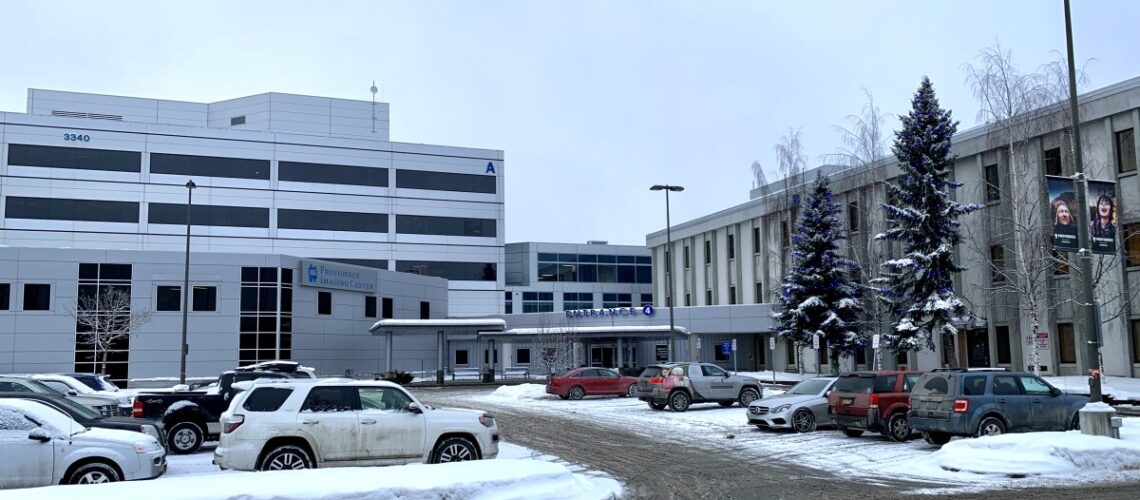Thousands of Alaskans to see a steep rise in health insurance costs for the third year in a row
January 7, 2025

- Update on Historic Use of Crop Insurance Products in Illinois
- AM Best Affirms Credit Ratings of Al Fujairah National Insurance Company PJSC
- UnitedHealthcare CEO killing: Poll finds insurance profits, killer are to blame
- How Florida Could Solve Its Insurance Crisis in 2025
- I’m 72 and my health insurance is denying my hip surgery — even with proof that I need it. What can I do now?
More than 20,000 Alaskans get their health insurance through the federal marketplace, and their plans are set to go up by about 17% this year. That follows two years of similar spikes in costs.
Bạn đang xem: Thousands of Alaskans to see a steep rise in health insurance costs for the third year in a row
Reporter Nat Herz of the Northern Journal has written about the increases for the past two years and argues there’s little widespread discussion about it. And Herz notes he’s not just covering the issue as a journalist — but as someone who’s feeling the strain of the rising costs himself.
Xem thêm : California wildfires causing $57 billion in damage as providers canceled insurance
Below is the transcript of an interview with Herz on Alaska News Nightly. It has been lightly edited for length and clarity.
Nat Herz: I’m a small business owner. I publish my own newsletter and news website, and so I have to come up with my own insurance, which means that I get it from the federal marketplace. And last year, when I signed up for my insurance, it seemed like it was going up. I checked with the state, and they gave me sort of this analysis of the rates on the federal individual marketplace, and indeed, they’ve gone up a lot. And when I went back to sign up again this year, I was like, it looks like it went up a lot. And it did, to $953 a month for my plan that I had been paying $834 a month for the year before. And I got an analysis from the state, again, that showed major average increases across all the individual plans for next year — 17% on top of 16.4% the year before, and another something like 15% the year before that. And you know, for me, it’s a big headache and it’s a bummer, but I’m one person. But the thing is here, there are about 20,000 Alaskans that insure themselves on this individual marketplace. So it’s not most people in the health insurance market, but it’s a significant chunk, and we’re all really feeling it right now.
Wesley Early: What’s driving these back-to-back… I guess, to-back increases?
NH: It’s a good question. And I think it’s like the question everyone wants an answer to, right? I think it’s a little bit opaque. I don’t get to see what Premera, which is my insurer, or Moda, the other insurer on the Alaska individual market… like what exactly is going into the numbers that they are crunching and putting out into an annual rate. But what we do know is that Premera has not actually been making money on these individual marketplace plans. They have said in filings to the federal government that they’re actually losing money in this particular slice of the market. And what they told me when I talked to them, Premera, is basically, one, costs of care are rising, what they’re being asked to pay providers. And two, I think more significantly, people are continuing to need more health care and more services. They are getting sicker, and I think the subtext to that is they’re also getting older in Alaska. And so all those trends kind of put together, you know, pharmaceutical drug prices are presumably also going up, that stuff all is sort of what’s driving the increase in cost of these plans.
WE: After a recent op-ed you published, Senator Lisa Murkowski reached out to you. What did she want to talk about?
NH: She basically said, ‘Yeah, this is a really big problem.’ And you know, looking at three years of 10% to 15% to 16% increases in the individual market, and a total of 50% cost increase over three years, like, that’s not good. And she basically was trying to say, ‘Look, I understand that this is not good, and it’s something I need to think about and work on.’ When I sort of asked her some of these same questions you’re asking me: What’s driving this? What can we do about it? That’s where I think her broad diagnosis about, like, increase in need for services, aging population, sicker population, that was sort of similar. But she talked about wanting to push more as far as, like, preventive care and getting people into the health care system before they’re really kind of acutely sick. But you know, she didn’t necessarily say… she was actually pretty explicit about saying, ‘I don’t have a silver bullet here. I’m not, you know, gonna necessarily be able to just fix this problem out of hand.’
WE: Is there any sense that policymakers will be able to address the rising costs? Are there things like tax credits they can advocate for?
NH: Well, certainly there is the issue of significant tax credits for the individual marketplace that are making the current situation better than it otherwise would be. Those enhanced tax credits, which were created by Congress during the COVID pandemic, those are set to expire at the end of this year, and it’s not clear if Congress will be able to reauthorize those because of sort of partisan conflict. Senator Murkowski said she would be supportive of continuing them in isolation. I think beyond that, like, I took the tact in this story of, like, the health care world is so complex and dysfunctional that I don’t feel qualified to offer real, specific, discrete recommendations about what policymakers should do. I think that’s something that requires someone who’s more informed and who has studied the issue. I don’t feel like currently in Alaska, we are having a robust discourse about how dysfunctional and expensive the system is. And, you know, it was my goal to kind of go somewhere between those two messages, which was to say and acknowledge, ‘Look, I’m not an expert, but the system sure isn’t working for me, and I know it’s not working for tens of thousands of other Alaskans.’
Nguồn: https://propertytax.pics
Danh mục: News
